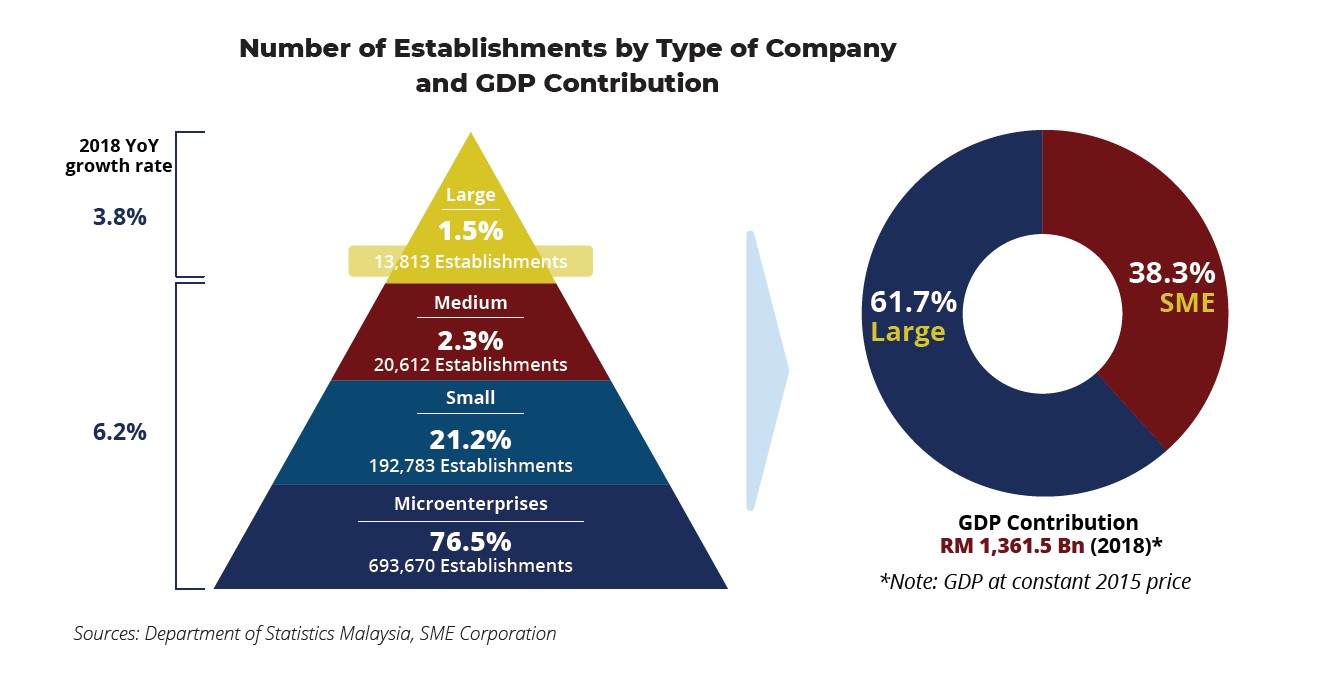After a rough year due to the COVID-19 pandemic, Malaysia’s economy is showing positive signs of recovery. According to the June 2021 issue of Forbes Asia, exports grew by 31% in March, the largest year-on-year expansion in the last four years. The country’s GDP, already outpacing its SEA neighbors, is expected to grow between 6% to 7.5% in 2021.
But with other countries in the region also ramping up their recovery strategies, Forbes stipulates that “full-throated digital transformation” is crucial in ensuring Malaysia’s continued economic growth, as other Southeast Asian countries vie to compete for its industrial dominance.
Already the country has begun its digital transformation, but urgently needs the support of its business stakeholders to accelerate growth. According to the white paper Accelerating Your Digital Transformation: Are Malaysian Companies Geared to Digitalise? by YCP Solidiance, addressing the existing barriers to digitalisation—in both larger companies and SMEs—will be crucial in helping the country overcome the losses of the pandemic and surge forward to enjoy higher GDP growth.
The Current Barriers to Digitalisation
As of 2018, Malaysian companies have been divided into 98.5% SMEs (small to medium enterprises) and 1.5% larger companies. While SMEs make up the bulk of the country’s business establishments, it is the larger companies who drive the country’s economy, contributing 61.7% towards the GDP in 2018. 
However, SMEs make up the foundation of the country’s GDP growth rate at 6.2% in 2018. It is vital for SMEs to lead the way when it comes to digital transformation in order to urge larger companies, who are wary of buying-in to risky digital solutions, to adopt these innovative solutions.
Overall, both types of companies suffer from similar barriers when it comes to digitalisation:
- Issues with digital competency, at 62% for SMEs and 38% for large companies
- Difficulty in securing organizational buy-in, at 48% for SMEs and 52% for large companies
- The high cost of adopting this new technology, 55% for SMEs and 45% for large companies
- Lack of dedicated digital talent, 51% for SMEs and 49% for large companies
Initiatives for Digitalisation
To tackle these issues, various measures have been introduced by key government agencies: the Ministry of International Trade and Industry (MTI), the Malaysian Investment Development Authority (MIDA), and the Malaysian Digital Economy Corporation (MDEC). Enhancing digital infrastructure, as well as digital competency programs to help the workforce upskill their digital literacy, are at the forefront of several financial grants for business establishments:
For Small to Medium Enterprises
- The Ministry of Finance has introduced grants of up to RM5,000 to enable businesses to procure basic digital technologies like Digital Marketing, CRM, Payroll Services, and Electronic POS.
- SMEs were also offered soft loans of RM50,000 to 1 million to finance digital services.
- The government also enacted plans with SME Corp. to establish platforms for knowledge transfer, specifically for the manufacturing and services sectors.
For Large Companies
- The Ministry of Finance has established grants for businesses to put up smart automation processes at around RM2 million per company.
- Tax incentives were also given for companies to transition to 5G and IR4.0, as well as encouraging consumers to adopt cashless payments through digital wallets.
Ensuring Business Recovery
The impact of COVID-19 has further highlighted the importance of digital transformation to secure a steady progression into recovery. Knowing the different barriers for digitalisation, as well as the various initiatives available for both SMEs and large companies to recover, will be the first step into crafting a long-term digital strategy that will accelerate business recovery and propel Malaysia’s economy further.
To learn more about how Malaysia’s businesses can incorporate digital strategy into their business plans, read and download our full report here.
To receive timely business insights focused on helping Asia’s industries move forward from COVID-19, subscribe to our newsletter here.






